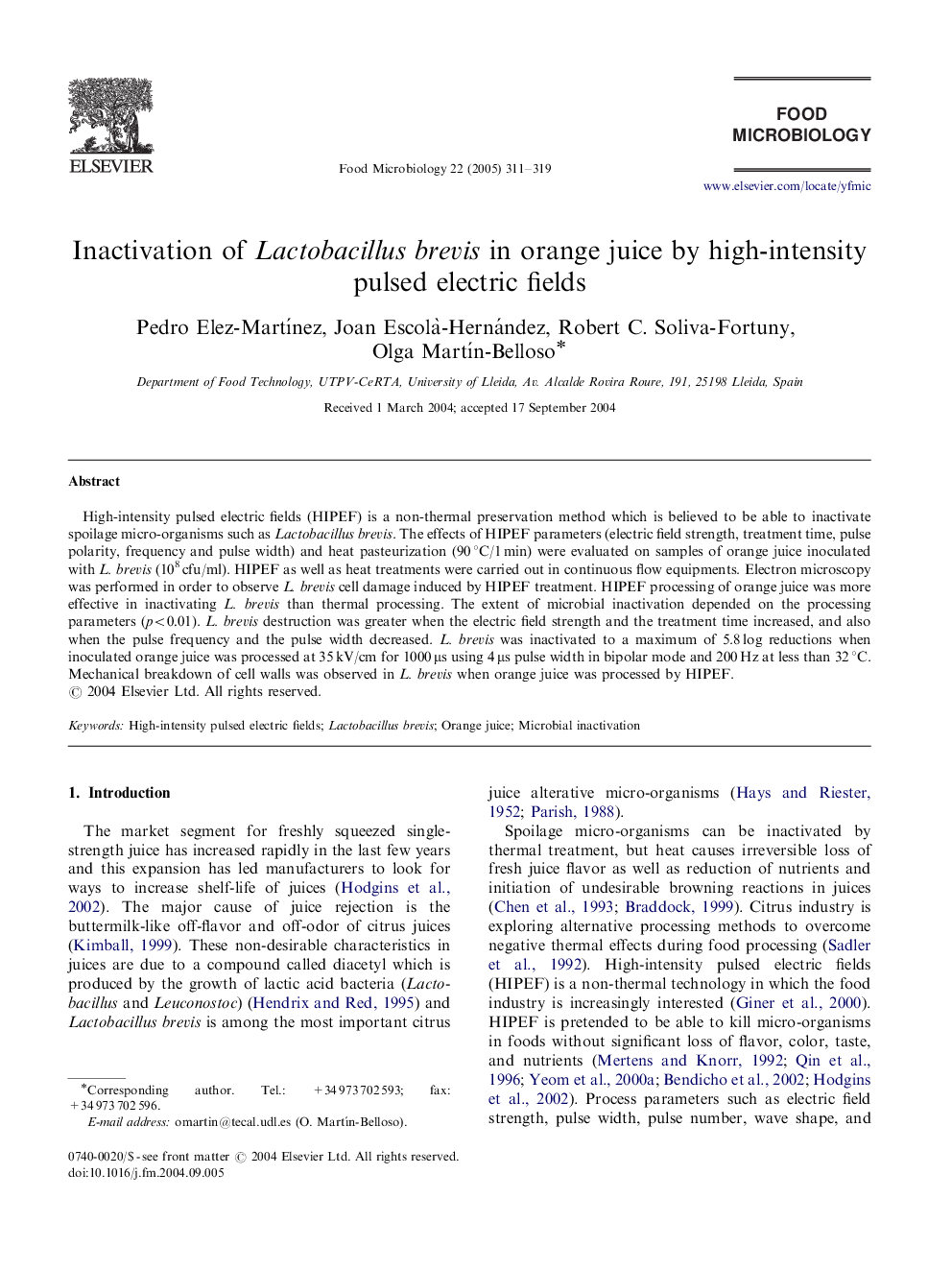| Article ID | Journal | Published Year | Pages | File Type |
|---|---|---|---|---|
| 9441927 | Food Microbiology | 2005 | 9 Pages |
Abstract
High-intensity pulsed electric fields (HIPEF) is a non-thermal preservation method which is believed to be able to inactivate spoilage micro-organisms such as Lactobacillus brevis. The effects of HIPEF parameters (electric field strength, treatment time, pulse polarity, frequency and pulse width) and heat pasteurization (90 °C/1 min) were evaluated on samples of orange juice inoculated with L. brevis (108 cfu/ml). HIPEF as well as heat treatments were carried out in continuous flow equipments. Electron microscopy was performed in order to observe L. brevis cell damage induced by HIPEF treatment. HIPEF processing of orange juice was more effective in inactivating L. brevis than thermal processing. The extent of microbial inactivation depended on the processing parameters (p<0.01). L. brevis destruction was greater when the electric field strength and the treatment time increased, and also when the pulse frequency and the pulse width decreased. L. brevis was inactivated to a maximum of 5.8 log reductions when inoculated orange juice was processed at 35 kV/cm for 1000 μs using 4 μs pulse width in bipolar mode and 200 Hz at less than 32 °C. Mechanical breakdown of cell walls was observed in L. brevis when orange juice was processed by HIPEF.
Keywords
Related Topics
Life Sciences
Agricultural and Biological Sciences
Food Science
Authors
Pedro Elez-MartÃnez, Joan Escolà -Hernández, Robert C. Soliva-Fortuny, Olga MartÃn-Belloso,
